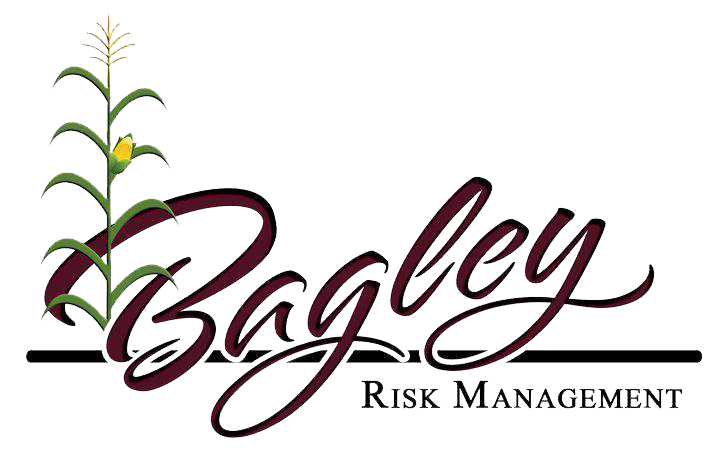The smart Trick of Bagley Risk Management That Nobody is Talking About
The smart Trick of Bagley Risk Management That Nobody is Talking About
Blog Article
Expert Guidance on Risk Assessment and LRP Insurance Coverage Solutions

The Significance of Danger Evaluation
Efficient threat analysis is fundamental in the decision-making procedure of any kind of organization, assisting critical planning and source allocation. By systematically identifying, evaluating, and prioritizing possible risks, businesses can expect challenges, maximize opportunities, and make informed selections to achieve their goals. Danger evaluation allows companies to proactively deal with susceptabilities, alleviate risks, and enhance their danger administration approaches.
Among the vital benefits of risk evaluation is its function in boosting functional effectiveness. By understanding the possible dangers that can affect different facets of business, companies can streamline procedures, assign resources better, and reduce the possibility of pricey disturbances. Moreover, risk assessment enables firms to follow regulative demands, safeguard their credibility, and construct trust fund with stakeholders.
Understanding Prospective Losses
To comprehend the effect of danger analysis, it is necessary to understand the potential losses that could dramatically impact an organization's procedures and monetary security. Potential losses can develop from various sources, consisting of all-natural catastrophes, financial downturns, operational failures, governing adjustments, and cybersecurity breaches. These losses can lead to straight costs such as property damages, lawful expenditures, and penalties, along with indirect expenses like reputational damages and loss of market share.
Understanding potential losses entails performing a detailed evaluation of the dangers that could emerge and estimating the monetary impact they may have on the organization. By measuring these possible losses, businesses can focus on risk mitigation efforts and assign sources successfully. In addition, a thorough understanding of possible losses makes it possible for organizations to make educated decisions when choosing risk administration methods, such as purchasing insurance coverage or applying risk control measures. Bagley Risk Management.
Essentially, by recognizing and comprehending potential losses, organizations can proactively manage risks and secure their long-term sustainability and success.
Duty of LRP Insurance Solutions
The combination of LRP insurance services within an organization's danger management structure boosts durability and strengthens financial stability versus unanticipated difficulties. LRP, or Loss Healing Product, insurance policy remedies play an essential function in minimizing the effect of potential losses by providing economic protection and support in times of situation. These insurance coverage options are tailored to meet the details requirements navigate to these guys of companies, providing insurance coverage for various threats such as residential or commercial property damage, company disturbance, obligation claims, and a lot more.
By transferring the financial threat to an insurance policy provider, businesses can concentrate on their core procedures with better tranquility of mind, knowing that they are secured versus substantial economic losses. Additionally, LRP insurance coverage solutions can improve an organization's risk monitoring method by supplementing existing threat mitigation steps and making certain detailed security throughout all areas of prospective vulnerability.
Identifying Secret Risks
In the procedure of danger analysis, a vital step entails recognizing essential risks that have the prospective to impact a company's operations and economic stability. Identifying essential risks calls for a detailed analysis of internal and outside elements that could pose risks to the organization's purposes. Inner threats may include operational inadequacies, conformity problems, or personnel challenges, while outside threats could include economic slumps, regulative modifications, or all-natural disasters.

Furthermore, crucial threats should be routinely examined and upgraded to align with the vibrant organization environment. This aggressive approach enables organizations to stay in advance of possible risks and guard their long-term success.
Selecting the Right Coverage
Having actually determined the essential risks that might influence an organization's procedures and financial security, the following critical action involves meticulously selecting the ideal insurance coverage to successfully handle and alleviate these risks. Companies require to consider their particular risk direct exposure, monetary capabilities, and tactical objectives when it comes to selecting the ideal insurance coverage. It is vital to conduct an extensive examination of the readily available insurance policy alternatives to guarantee that the picked protection aligns with the company's see this danger administration objectives.

Organizations ought to work carefully with skilled insurance experts to evaluate their danger accounts and recognize one of the most ideal insurance policy items to address their requirements. Customizing insurance protection to particular risks can assist enhance defense while decreasing unneeded costs. Furthermore, organizations need to evaluate plan terms and problems carefully to comprehend the extent of coverage supplied and any type of prospective exemptions that may influence their risk mitigation methods.
Conclusion
In conclusion, threat assessment is crucial in recognizing possible losses and choosing the best LRP insurance solutions. Professional assistance can aid browse the intricacies of threat website here analysis and insurance coverage options, giving services with the required devices to properly handle and minimize threats.
Professional assistance plays an essential duty in this procedure, providing valuable understandings right into identifying and evaluating risks, as well as purposefully selecting ideal insurance protection customized to mitigate those risks successfully. A comprehensive understanding of prospective losses allows companies to make enlightened decisions when picking danger monitoring approaches, such as buying insurance protection or carrying out risk control procedures.

Report this page